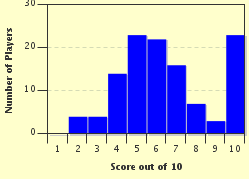Quiz Answer Key and Fun Facts
1. In which century did knighthood become its own distinct social rank or class, the achievement of which was largely restricted to the nobility?
2. The code of chivalry, which established the guidelines for a knight's rule of conduct in the medieval era, was applied to three aspects of a knight's life. Which were these?
3. The first military order of knighthood were the Teutonic Knights, established in 1099 during the First Crusade.
4. By which of the following names were the Poor Fellow-Soldiers of Christ and of the Temple of Solomon also known?
5. In medieval literature, knights were portrayed as gallant figures in search of adventures through which they could prove themselves through noble deeds and gestures. One of the most famous of these literary figures, known as knights errant, was Sir Lancelot. In which literary work did Sir Lancelot first appear as a main character?
6. The Prologue of "The Canterbury Tales" began with a portrayal of the Knight, whose actual deeds were so violent as to suggest a disparity between the ideal knight, who embodied the code of chivalry, and real knights' actual deeds. Which writer and sharp social observer depicted the Knight so ironically?
7. During which famous historical period or event did the notion of a knight as an armored cavalryman, whose main duty was military, emerge?
8. There were no women in chivalric orders established after the Crusades.
9. With the waning of the Middle Ages and the rise of professional armies, the title of "knight" was separated from notions of military duty. By 1560 strictly honorific orders were established. Which of the following was one such order?
10. By the 17th century, the notion of chivalry was an object of satire. Which famous novel, published in two volumes by Miguel de Cervantes, parodied the knight-errant of medieval literature, and featured perhaps the most famous knight in literary history?
Source: Author
lola0177
This quiz was reviewed by FunTrivia editor
bloomsby before going online.
Any errors found in FunTrivia content are routinely corrected through our feedback system.

